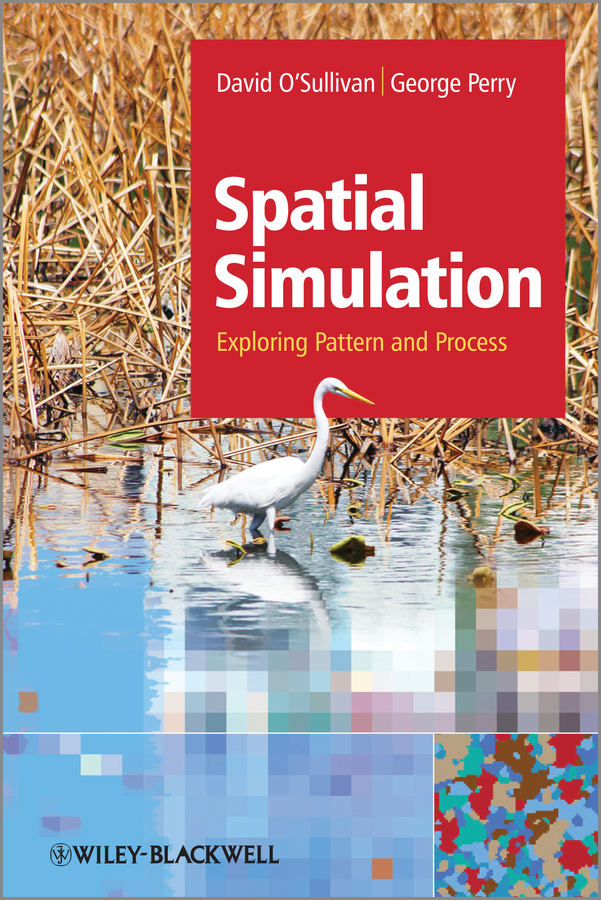Электронная книга: Perry George L.W. «Spatial Simulation. Exploring Pattern and Process»

|
A ground-up approach to explaining dynamic spatial modelling for an interdisciplinary audience. Across broad areas of the environmental and social sciences, simulation models are an important way to study systems inaccessible to scientific experimental and observational methods, and also an essential complement to those more conventional approaches. The contemporary research literature is teeming with abstract simulation models whose presentation is mathematically demanding and requires a high level of knowledge of quantitative and computational methods and approaches. Furthermore, simulation models designed to represent specific systems and phenomena are often complicated, and, as a result, difficult to reconstruct from their descriptions in the literature. This book aims to provide a practical and accessible account of dynamic spatial modelling, while also equipping readers with a sound conceptual foundation in the subject, and a useful introduction to the wide-ranging literature. Spatial Simulation: Exploring Pattern and Process is organised around the idea that a small number of spatial processes underlie the wide variety of dynamic spatial models. Its central focus on three‘building-blocks’ of dynamic spatial models – forces of attraction and segregation, individual mobile entities, and processes of spread – guides the reader to an understanding of the basis of many of the complicated models found in the research literature. The three building block models arepresented in their simplest form and are progressively elaborated and related to real world process that can be represented using them. Introductory chapters cover essential background topics, particularly the relationships between pattern, process and spatiotemporal scale. Additional chapters consider how time and space can be represented in more complicated models, and methods for the analysis and evaluation of models. Finally, the three building block models are woven together in a more elaborate example to show how a complicated model can be assembled from relatively simple components. Toaid understanding, more than 50 specific models described in the book are available online at patternandprocess.org for exploration in the freely available Netlogo platform. This book encourages readers to develop intuition for the abstract types of model that are likely to be appropriate for application in any specific context. Spatial Simulation: Exploring Pattern and Process will be of interest to undergraduate and graduate students taking courses in environmental, social, ecological and geographical disciplines. Researchers and professionals who require a non-specialist introduction willalso find this book an invaluable guide to dynamic spatial simulation. Издательство: "John Wiley&Sons Limited"
ISBN: 9781118555071 электронная книга Купить за 11703.21 руб и скачать на Litres |
Другие книги схожей тематики:
| Автор | Книга | Описание | Год | Цена | Тип книги |
|---|
См. также в других словарях:
Spatial analysis — In statistics, spatial analysis or spatial statistics includes any of the formal techniques which study entities using their topological, geometric, or geographic properties. The phrase properly refers to a variety of techniques, many still in… … Wikipedia
Cellular neural network — Cellular neural networks (CNN) are a parallel computing paradigm similar to neural networks, with the difference that communication is allowed between neighbouring units only. Typical applications include image processing, analyzing 3D surfaces,… … Wikipedia
Earth Sciences — ▪ 2009 Introduction Geology and Geochemistry The theme of the 33rd International Geological Congress, which was held in Norway in August 2008, was “Earth System Science: Foundation for Sustainable Development.” It was attended by nearly… … Universalium
computer — computerlike, adj. /keuhm pyooh teuhr/, n. 1. Also called processor. an electronic device designed to accept data, perform prescribed mathematical and logical operations at high speed, and display the results of these operations. Cf. analog… … Universalium
artificial intelligence — the capacity of a computer to perform operations analogous to learning and decision making in humans, as by an expert system, a program for CAD or CAM, or a program for the perception and recognition of shapes in computer vision systems. Abbr.:… … Universalium
Latitudinal gradients in species diversity — The pattern= The increase in species richness or biodiversity that occurs from the poles to the tropics, often referred to as the latitudinal gradient in species diversity, is one of the most widely recognized patterns in ecology. Put another way … Wikipedia
